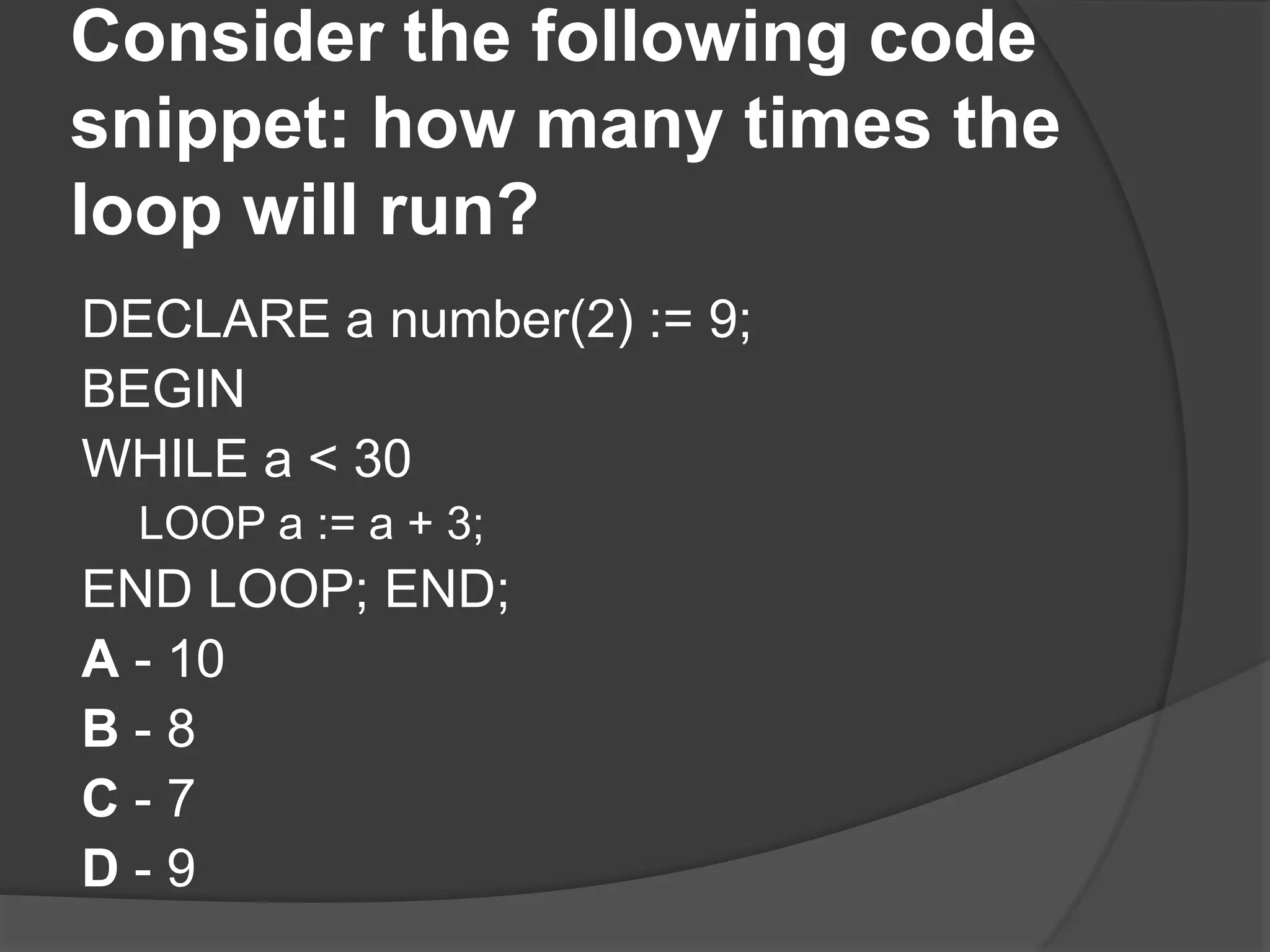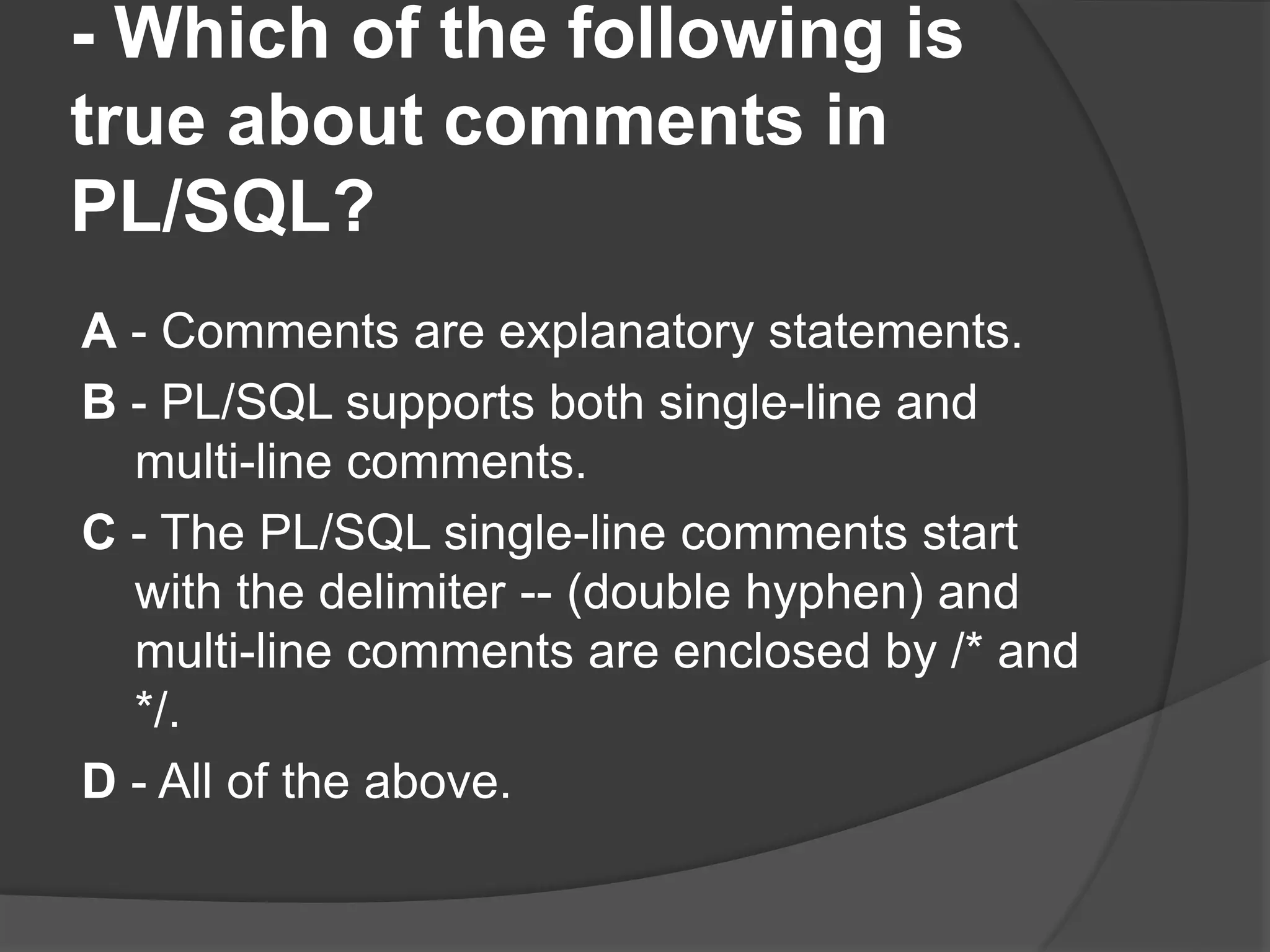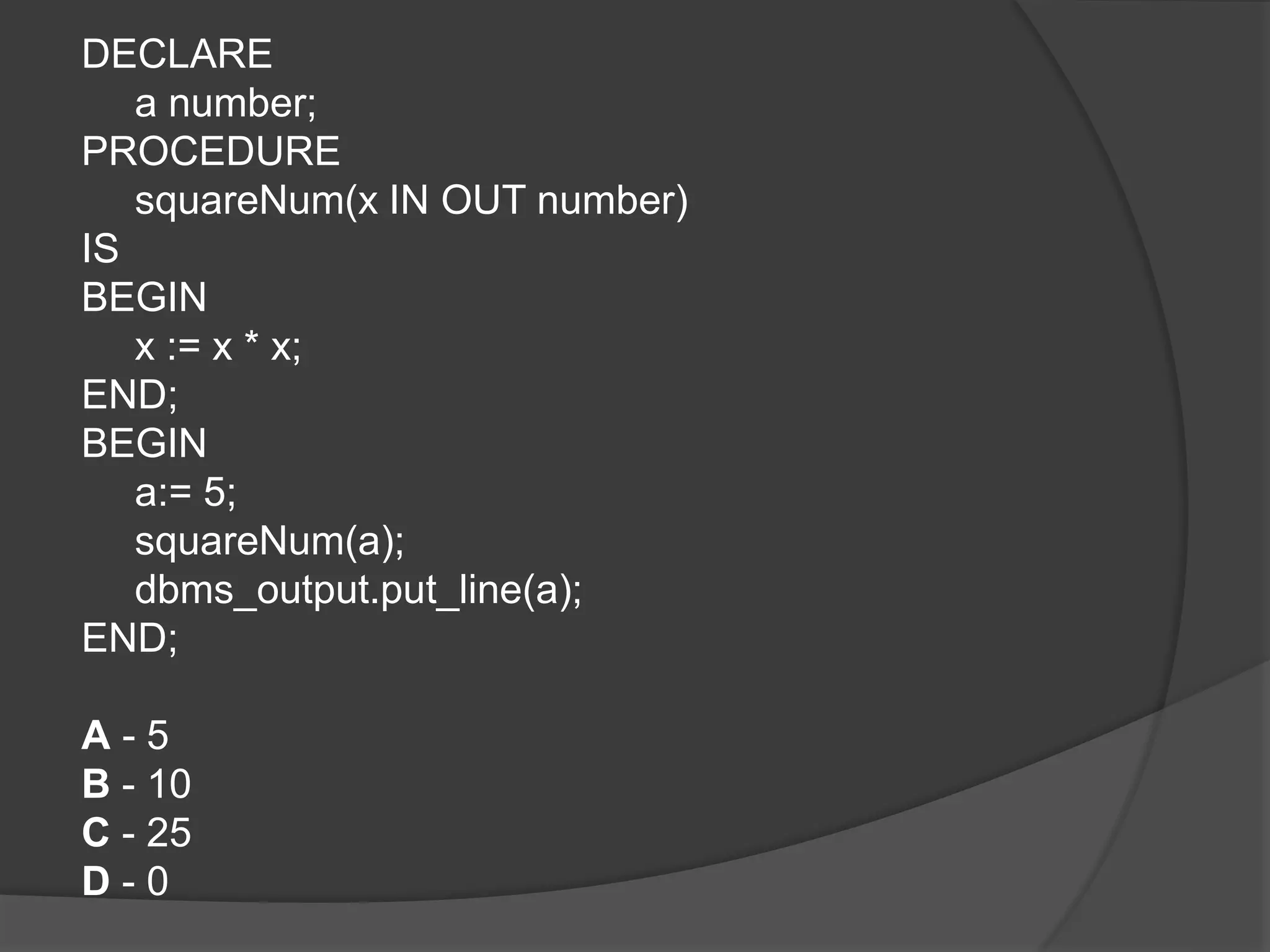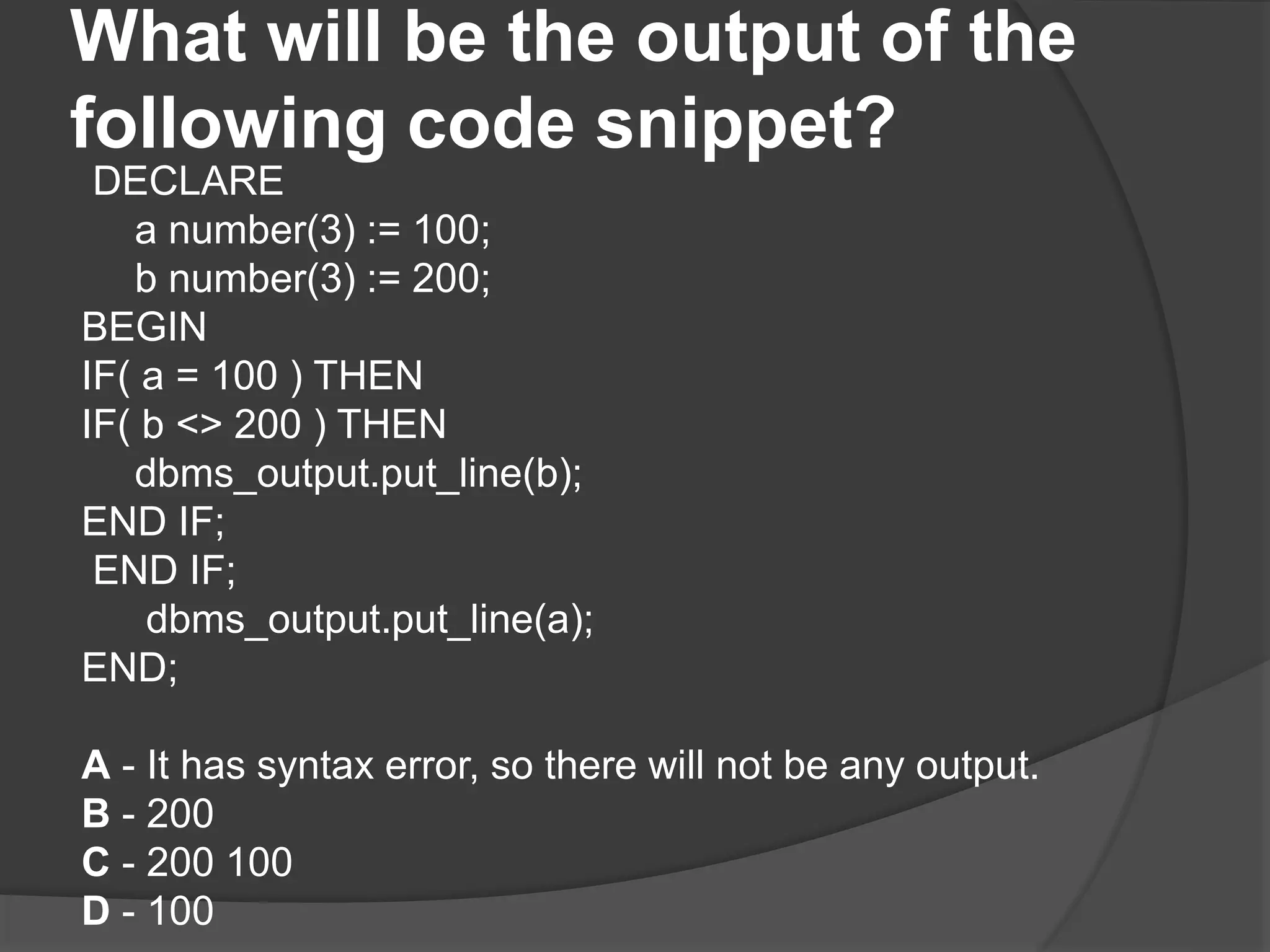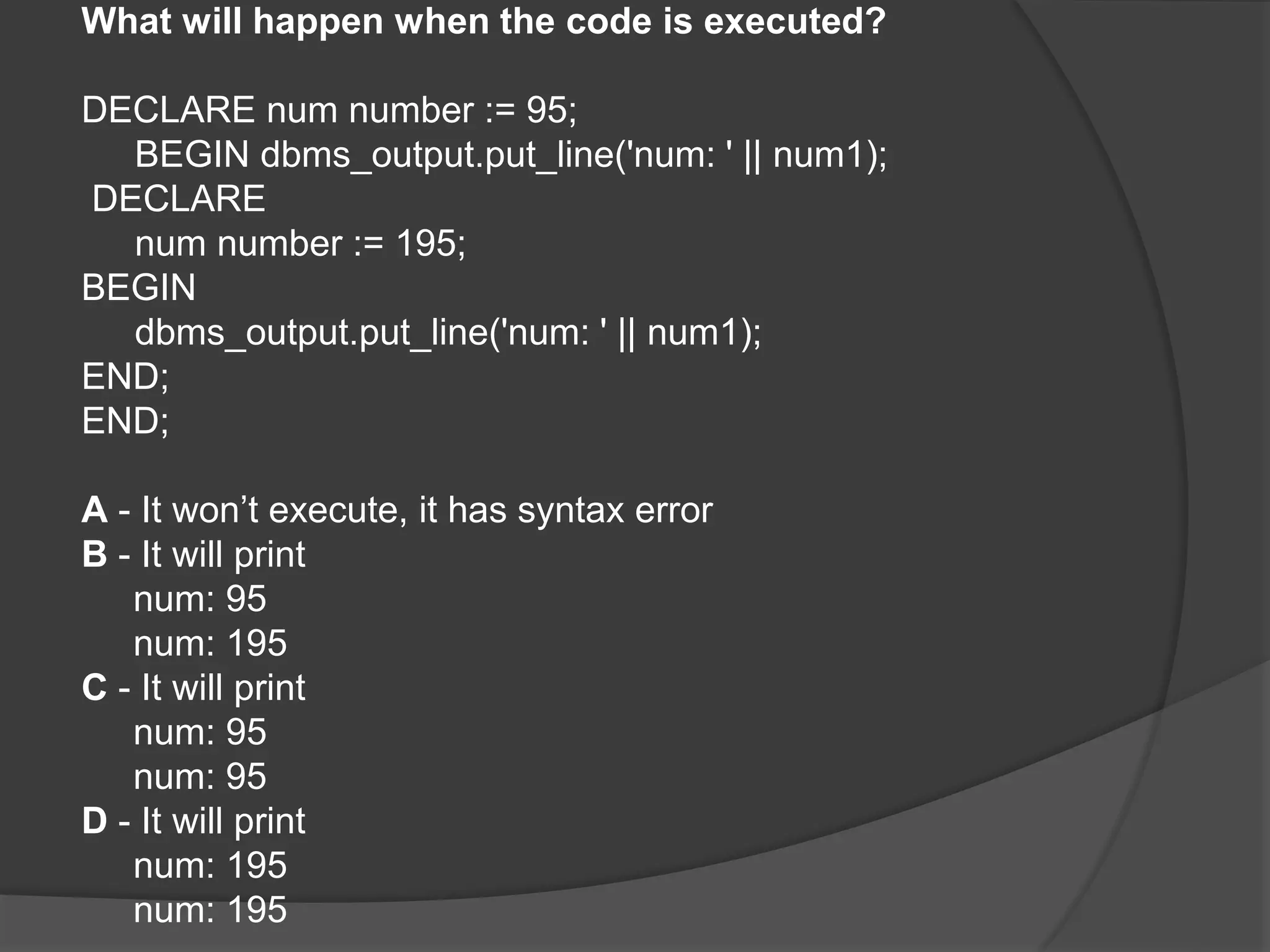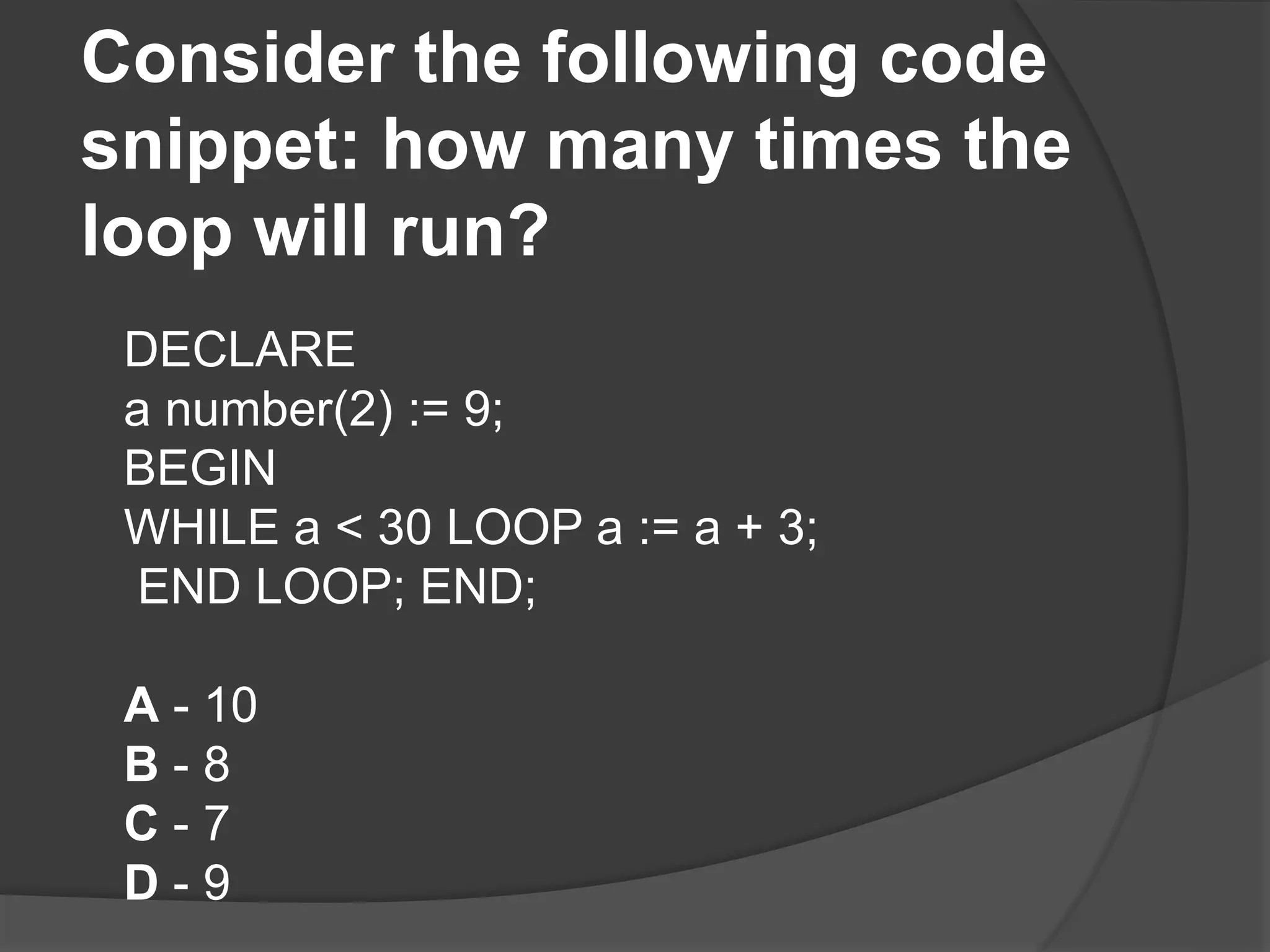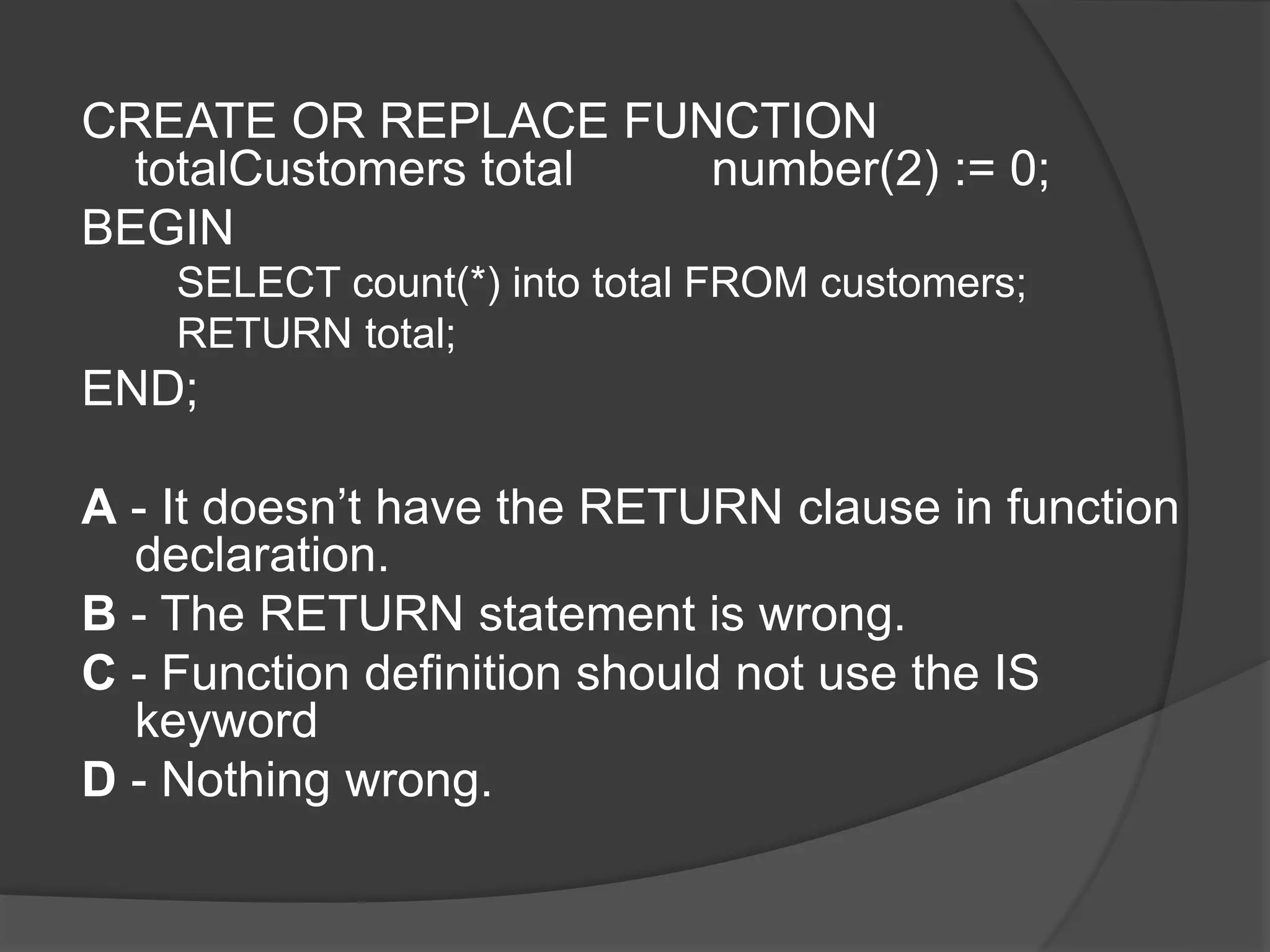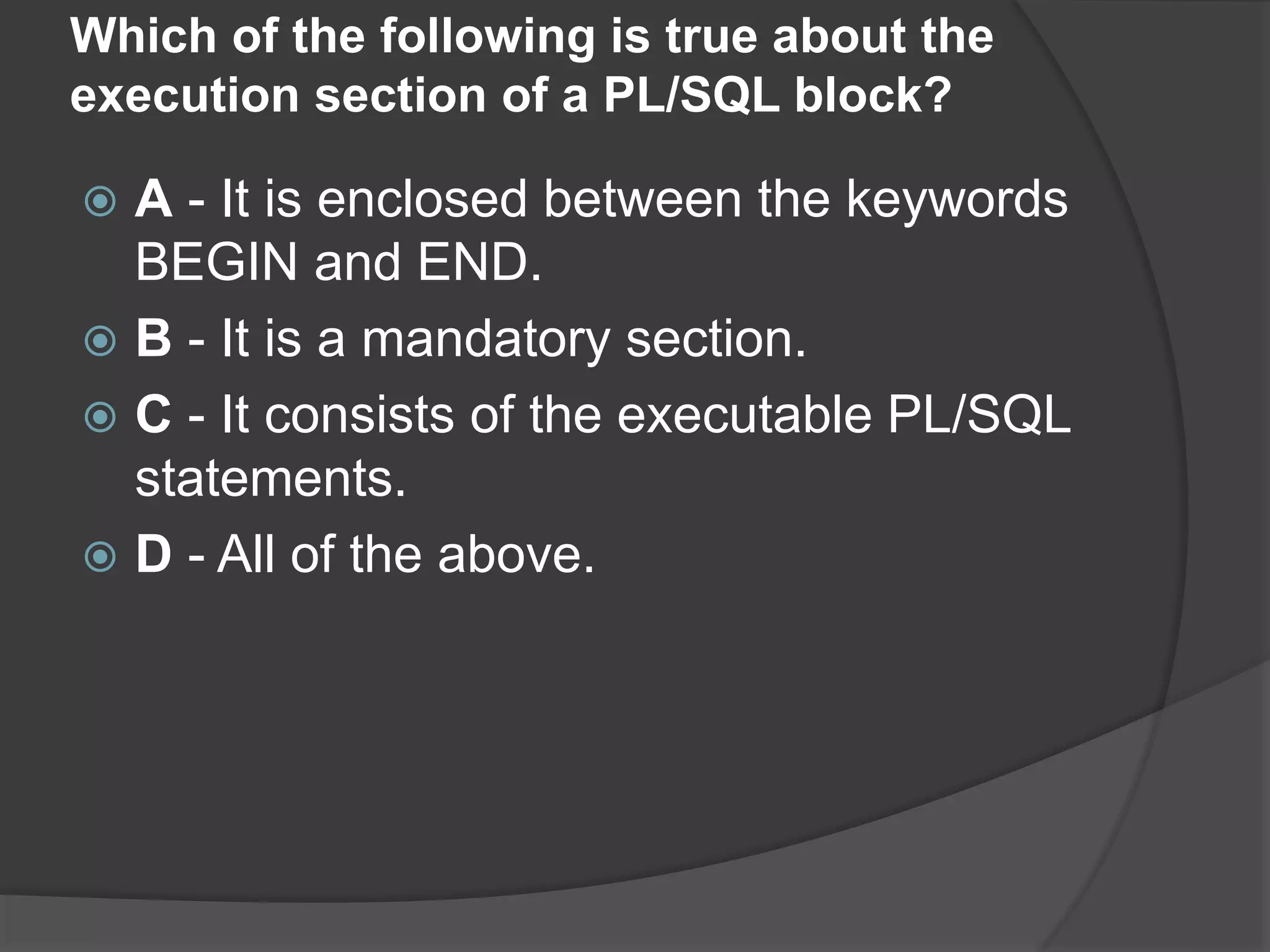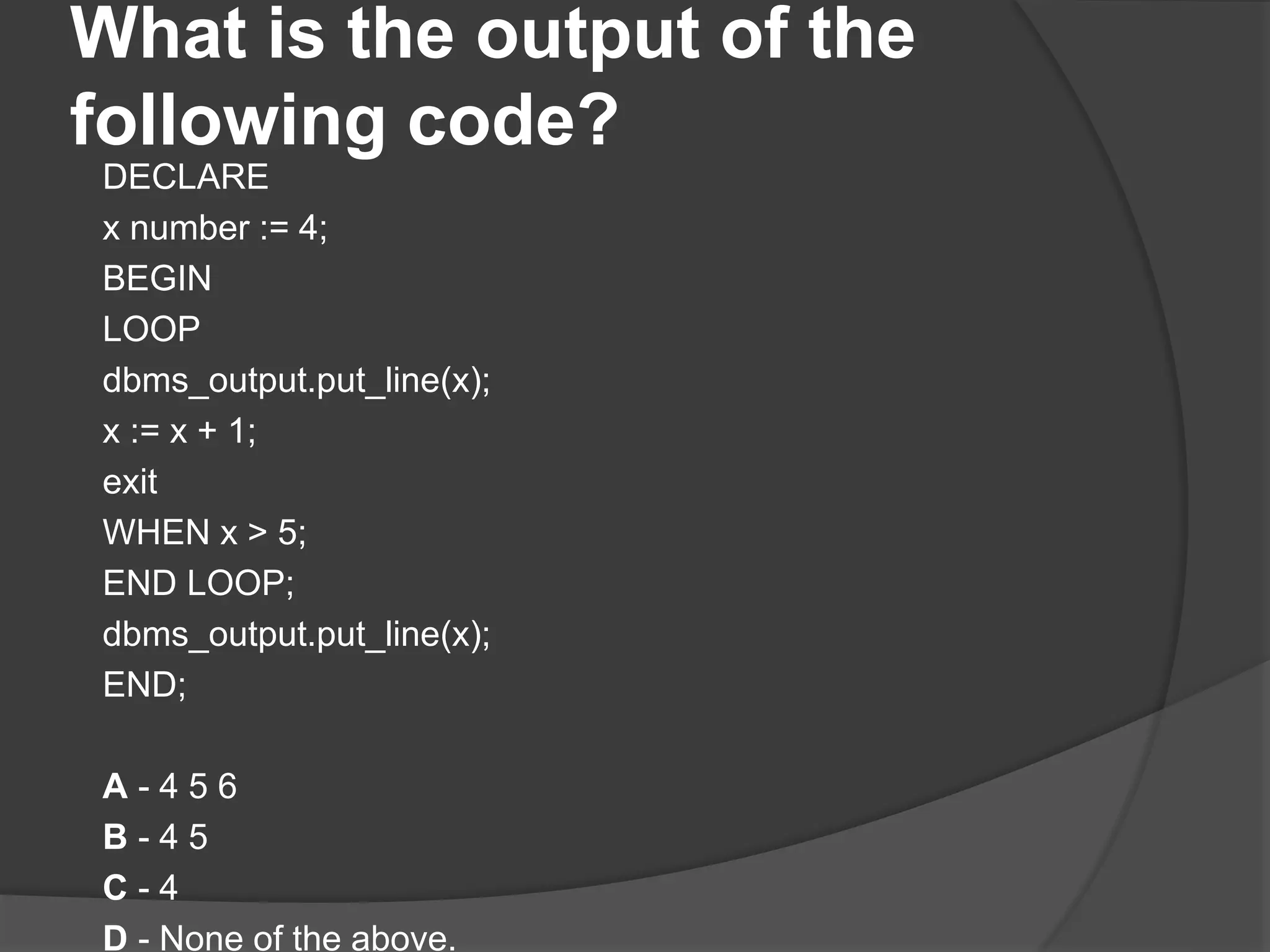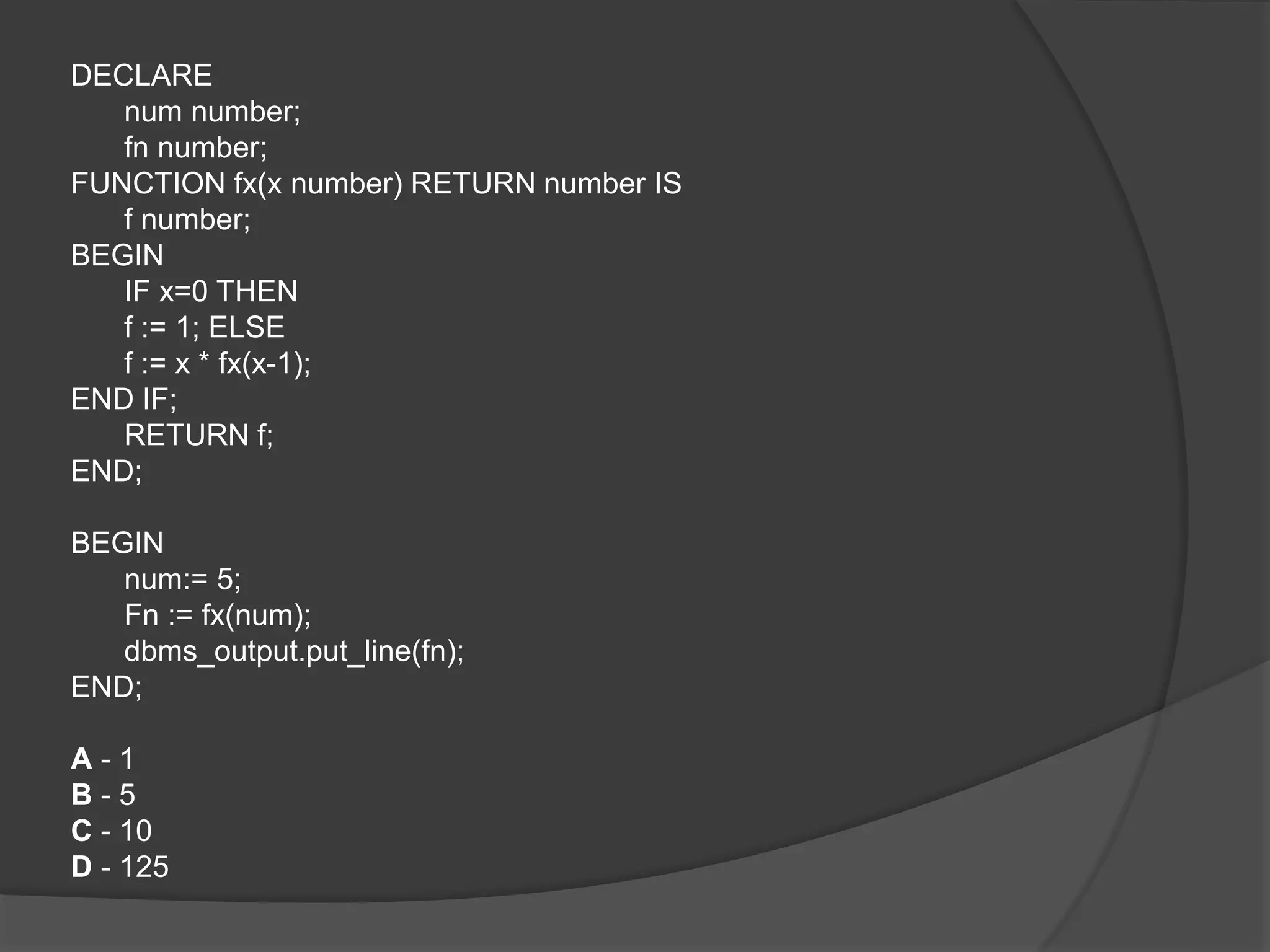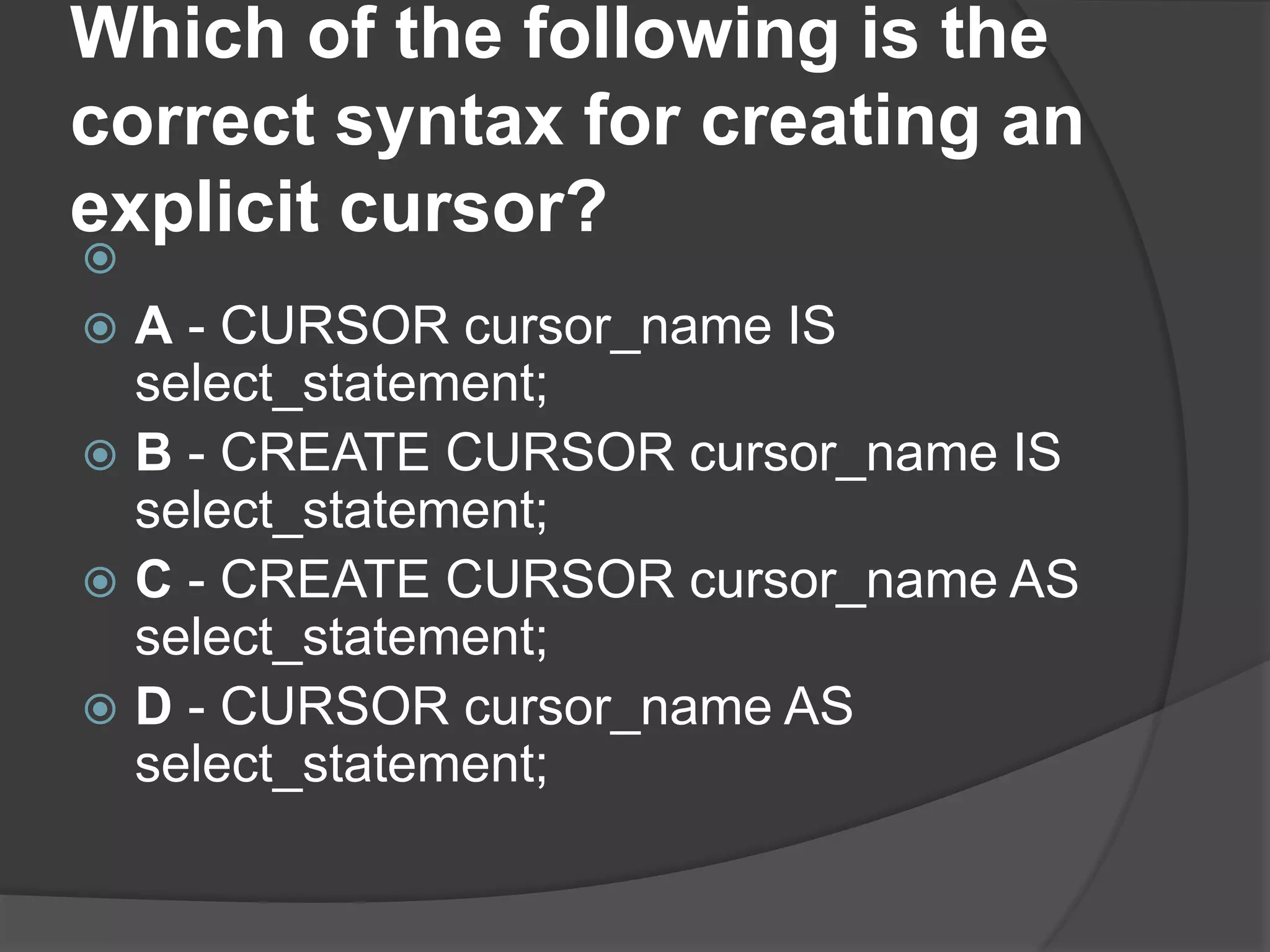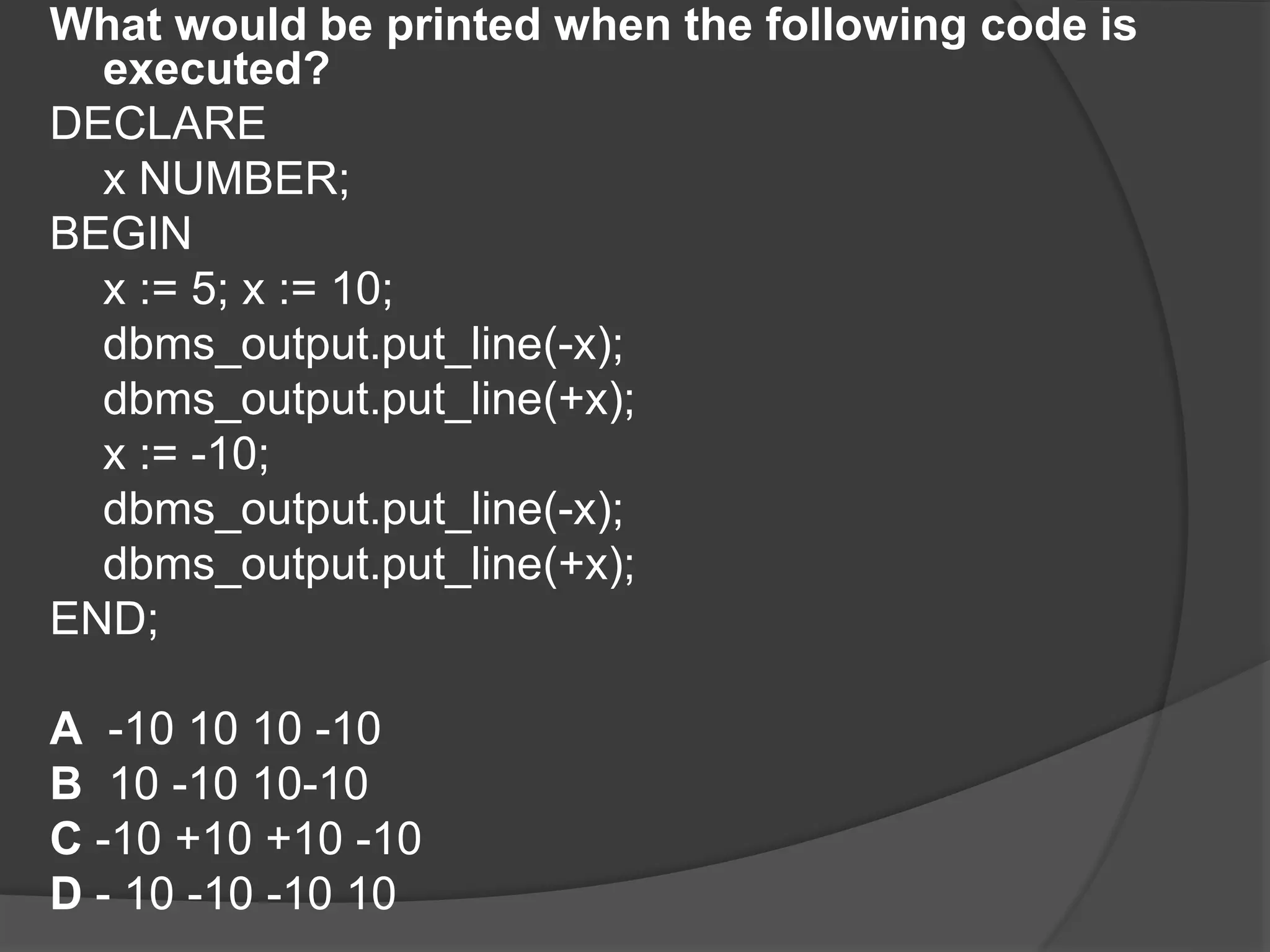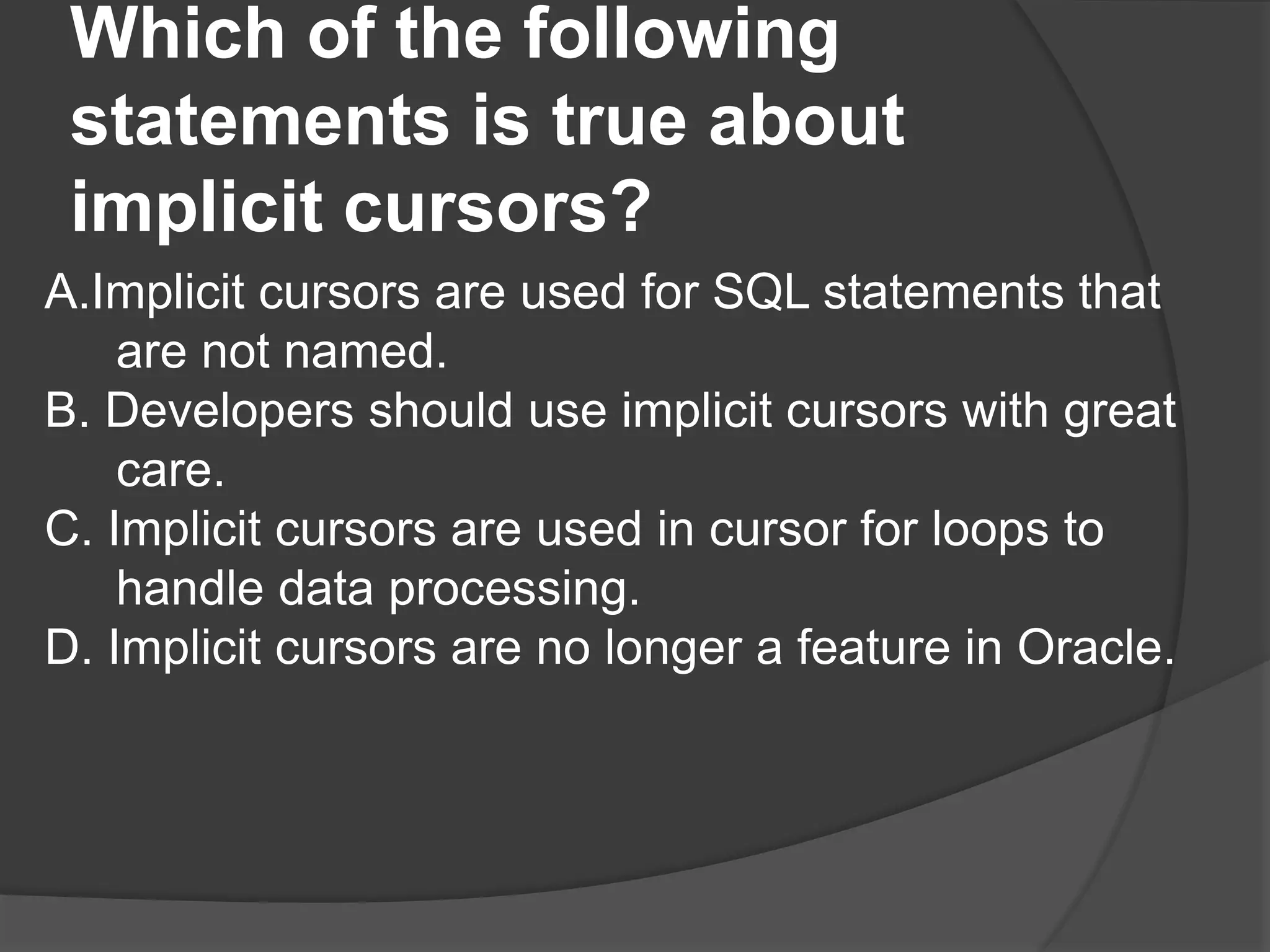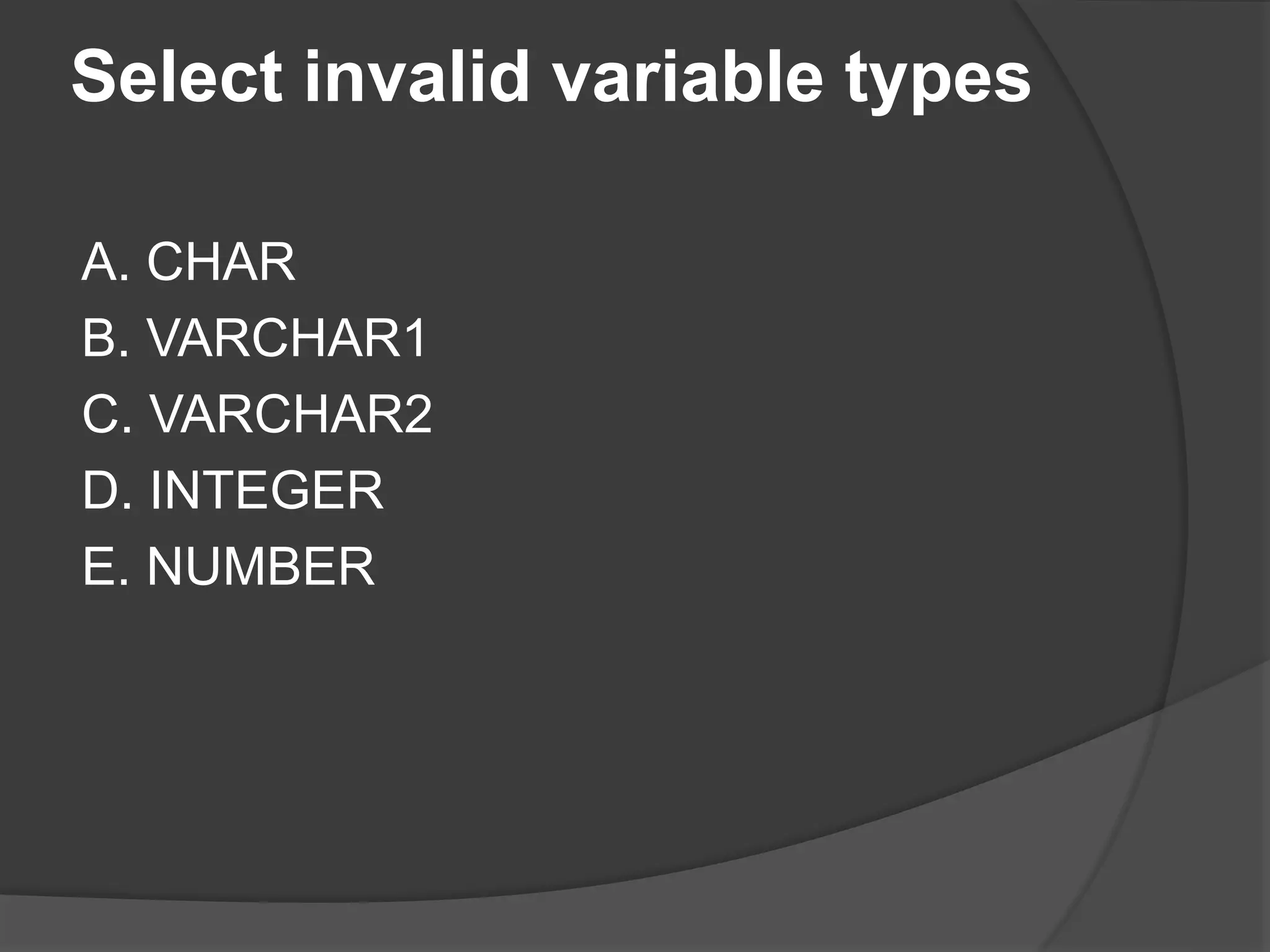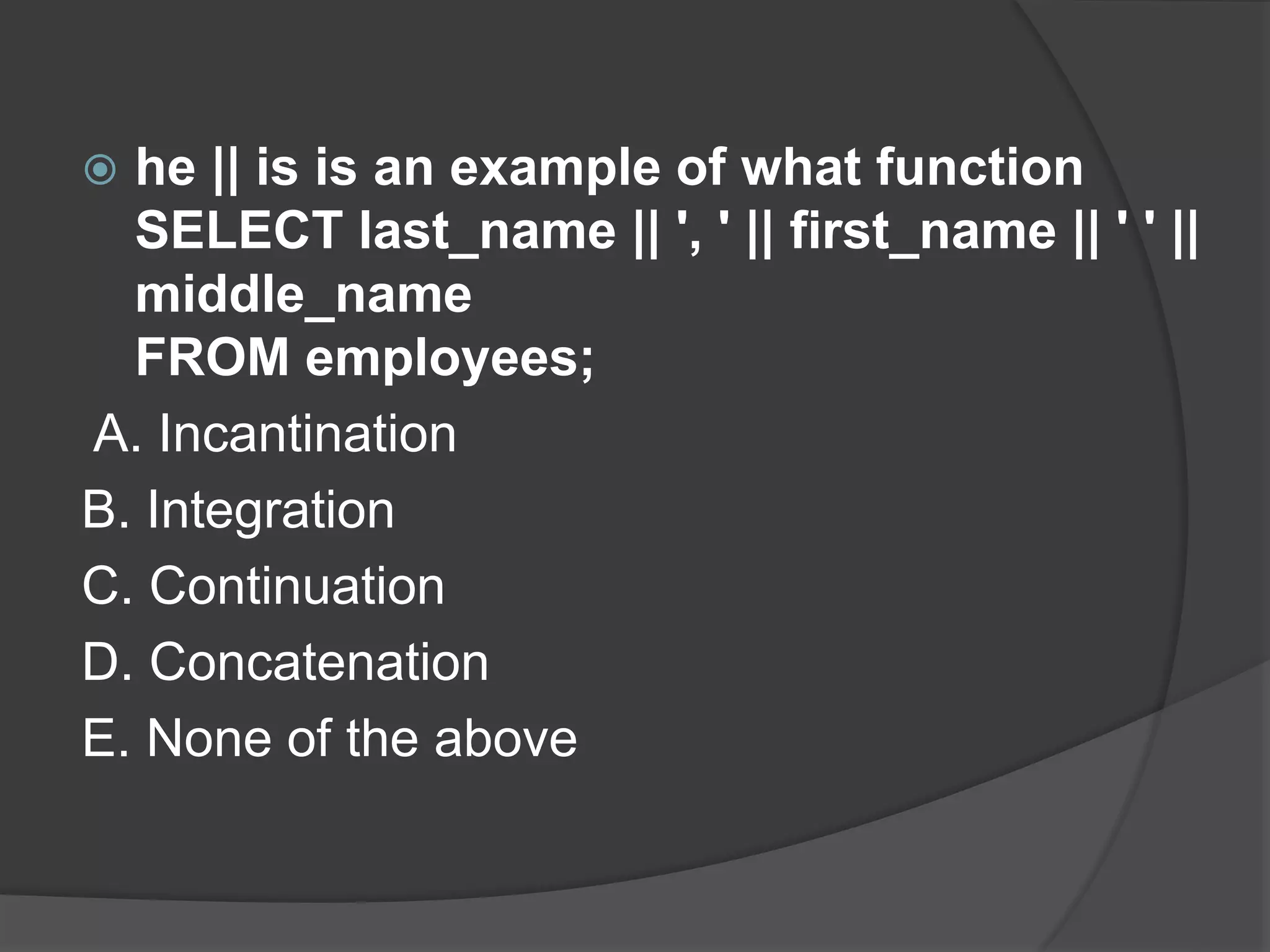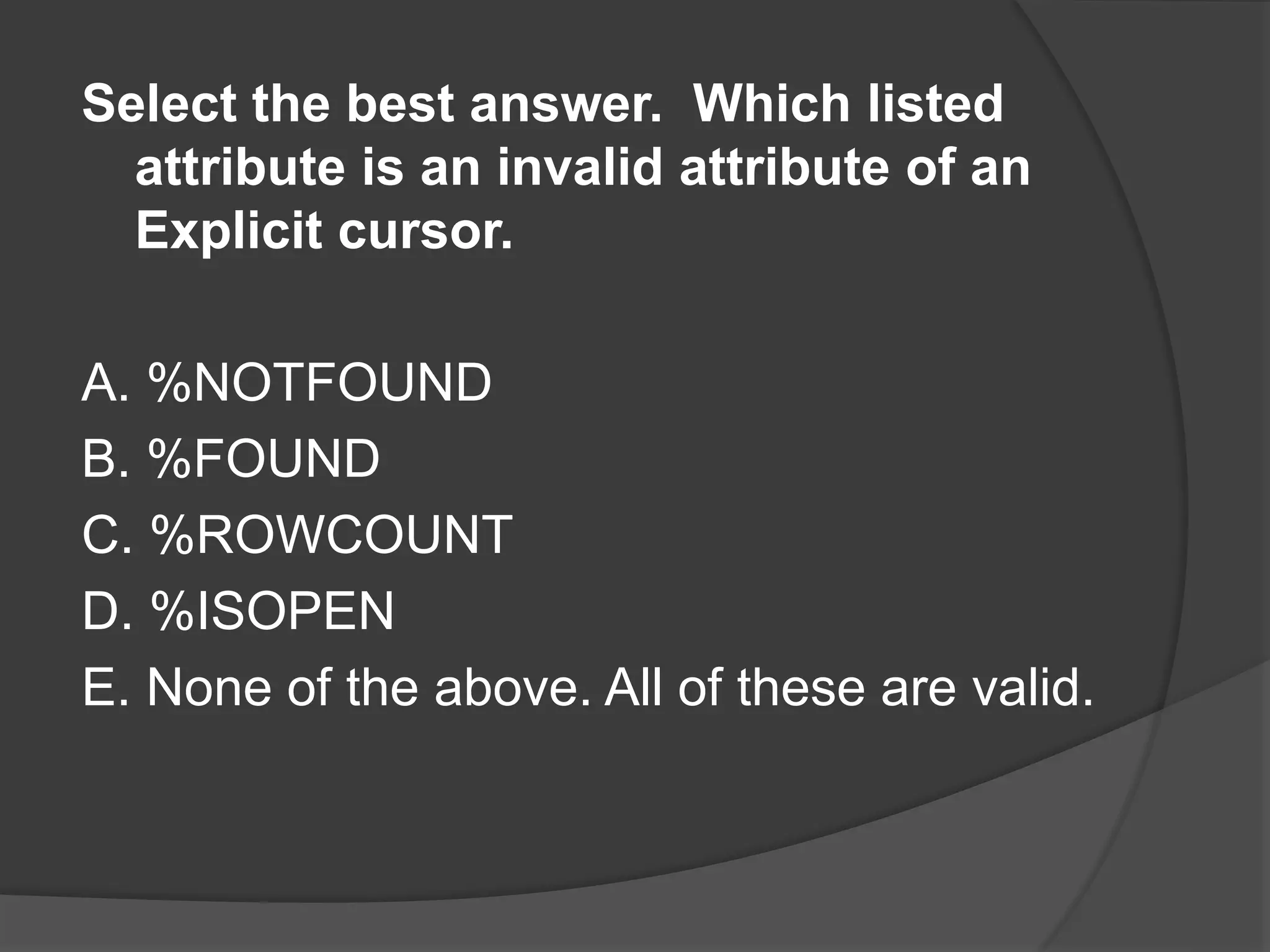The document contains a series of questions related to PL/SQL code snippets, syntax, and concepts such as stored procedures, loops, functions, and cursors. Each question offers multiple-choice answers, addressing key PL/SQL programming concepts and their potential outputs or behaviors. It aims to assess knowledge of PL/SQL language correctness and structure.
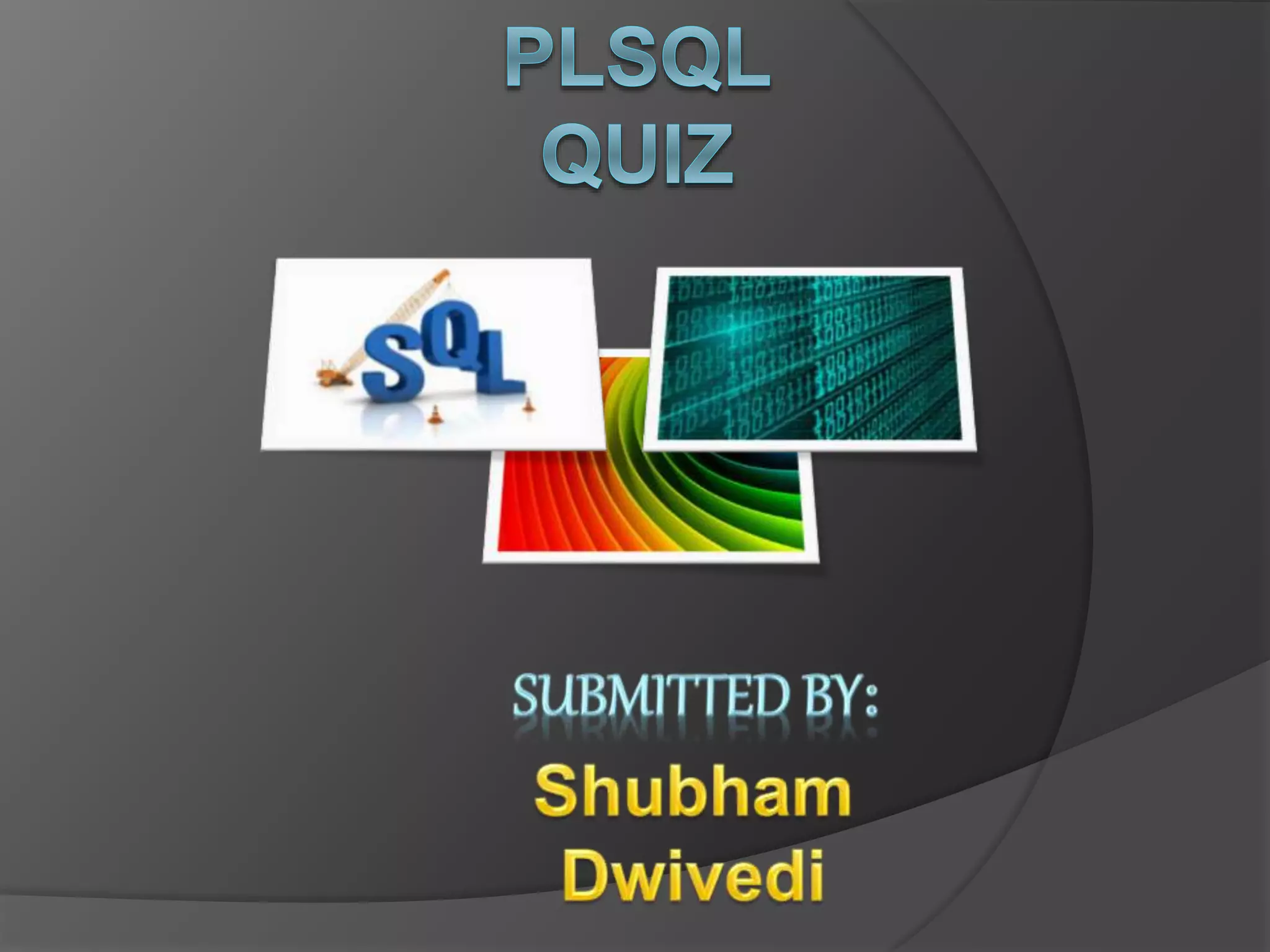
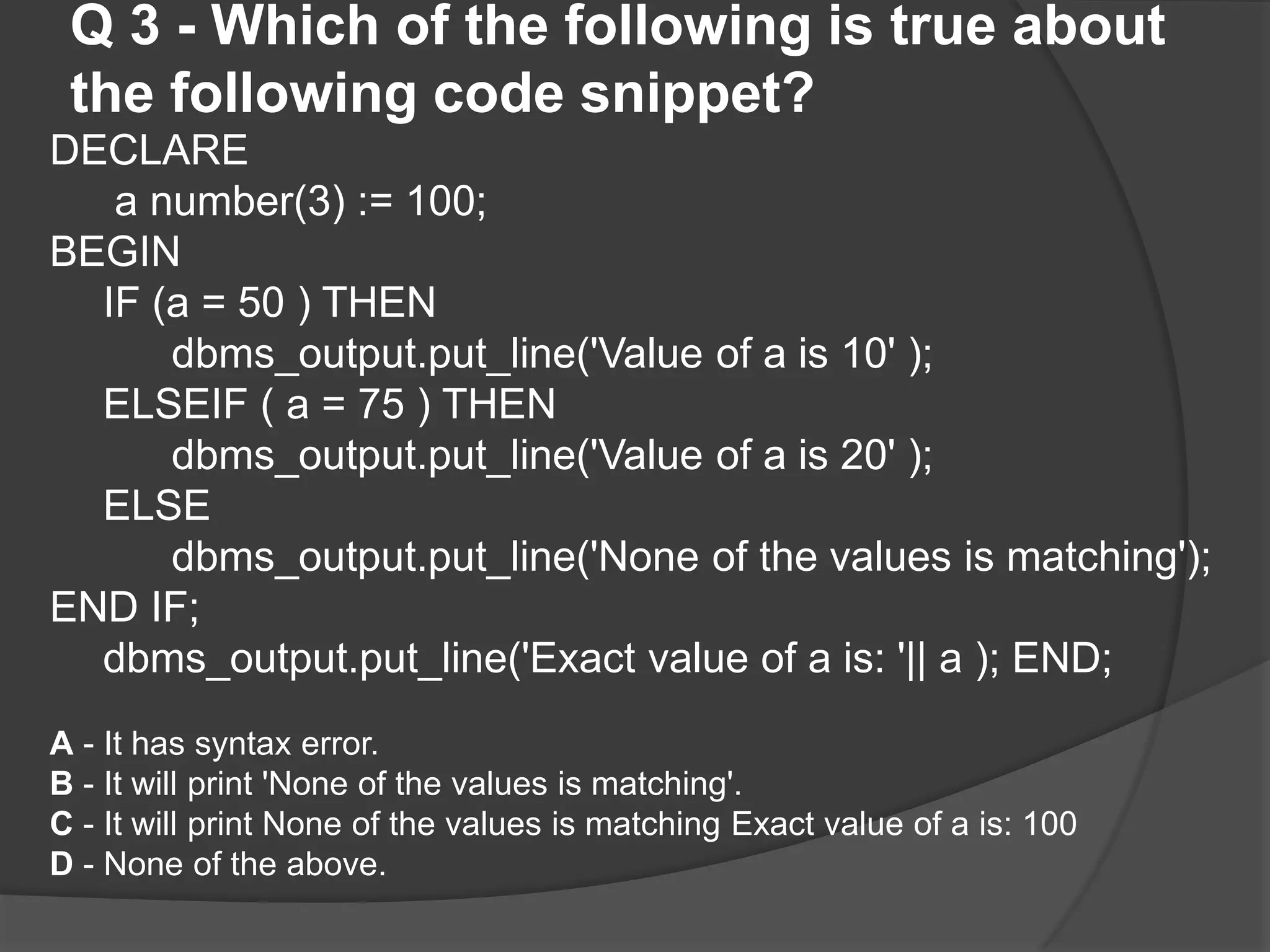
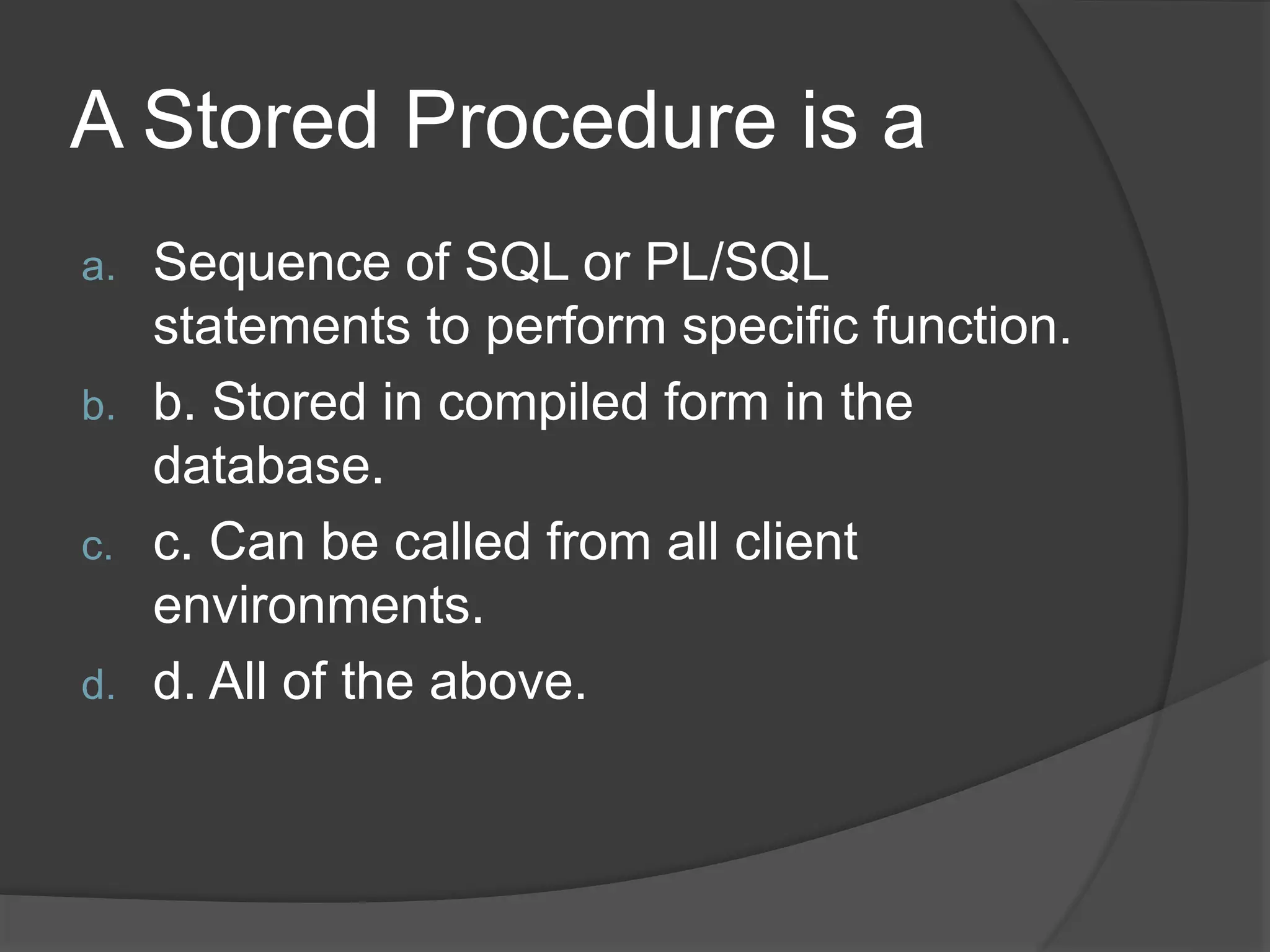
![Which of the following is NOT VALID in PL/SQL ? a] Select ... Into b] Update c] Create d] Delete](https://image.slidesharecdn.com/plsql-170109055843/75/PL-SQL-Quiz-PL-SQL-Examples-4-2048.jpg)
![What is the Result of the following 'VIK'||NULL||'RAM' ? a] Error b] VIK RAM c] VIKRAM d] NULL](https://image.slidesharecdn.com/plsql-170109055843/75/PL-SQL-Quiz-PL-SQL-Examples-5-2048.jpg)
![ Declare a number := 5; b number := null; c number := 10; Begin if a > b AND a < c then a := c * a; end if; End; What will be the value of 'a' after execution ? a] 50 b] NULL c] 5 d] None of the above](https://image.slidesharecdn.com/plsql-170109055843/75/PL-SQL-Quiz-PL-SQL-Examples-6-2048.jpg)
